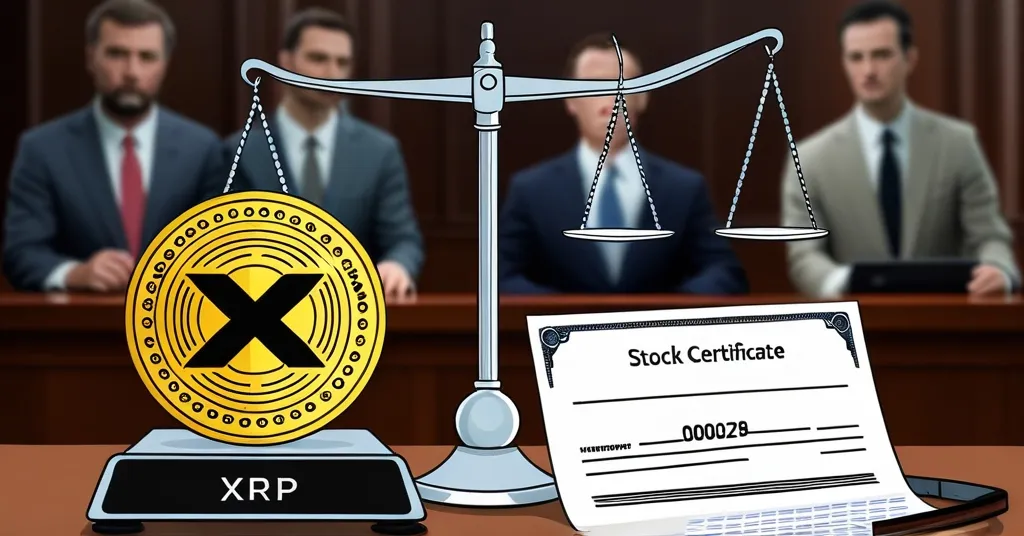Attorney John Deaton Challenges XRP’s Security Status Amid Strategic Reserve Debate

Attorney John Deaton Defends XRP Against Claims of Being a Centrally Controlled Security
The debate over XRP’s classification as a “centrally controlled security” has intensified, with technology entrepreneur Jason Calacanis and attorney John Deaton at the forefront. This legal tussle has far-reaching implications for the cryptocurrency market, especially as XRP’s potential inclusion in a U.S. strategic crypto reserve remains a hot topic.
- Jason Calacanis claims XRP is a centrally controlled security
- John Deaton argues XRP does not meet Howey Test criteria
- XRP’s potential inclusion in U.S. strategic crypto reserve debated
Jason Calacanis, a tech mogul known for his bold statements, has labeled XRP as a “centrally controlled security.” For those not fluent in crypto-speak, this means he believes XRP is more like a traditional stock, managed by a central entity, rather than a decentralized asset like Bitcoin. Calacanis warns that allowing XRP to trade freely could lead to market chaos. In his words:
“If the SEC allows it to trade like Bitcoin, then securities law will be worthless.”
He suggests that only “sophisticated investors” should be allowed to trade XRP, implying that the average Joe or Jane might not be equipped to handle its volatility.
Enter John Deaton, the founder of Crypto Law and a staunch defender of XRP. Deaton argues that XRP does not meet the legal requirements to be classified as an investment contract under the Howey Test. For the uninitiated, the Howey Test is a legal criterion used to determine if a transaction qualifies as an investment contract and thus a security. Deaton counters Calacanis’ view with:
“XRP is not a ‘contract transaction or scheme,’ countering Calacanis’ view that XRP is a centrally controlled security.”
This legal debate is particularly relevant as it unfolds against the backdrop of the SEC’s ongoing lawsuit against Ripple Labs, which has everyone in the crypto world on the edge of their seats.
The stakes are not just about XRP; they impact the entire U.S. cryptocurrency market. The potential inclusion of XRP in a proposed U.S. strategic crypto reserve, a sort of digital Fort Knox, adds another layer of intrigue. While some see XRP’s efficiency in cross-border transactions as a valuable asset for such a reserve, its regulatory status remains a contentious issue. Think of it like trying to fit a square peg into a round hole.
The political dimensions of this debate are also worth noting. Critics have pointed fingers at former President Trump’s approach to investor protections, suggesting his policies favored big money interests over the little guy. One critic remarked:
“Trump doesn’t care about investor protections – look at his approach to CFPB and other depts that lookout for these issues. Instead, he wants to provide big money with opportunities to fleece the sheep.”
But let’s not get too bogged down in politics. The XRP versus Bitcoin debate is a reflection of the broader regulatory challenges facing the crypto world. As the SEC lawsuit against Ripple continues, the outcome could set a precedent for how other cryptocurrencies are treated, impacting market stability and investor confidence.
Despite the controversy, there’s a growing interest in XRP ETFs. Reports suggest an 81% probability of approval this year, a stark contrast to Calacanis’ dire predictions. Meanwhile, Ripple CEO Brad Garlinghouse is advocating for a multichain approach, criticizing the maximalist mindset and emphasizing XRP’s potential role in a U.S. strategic reserve. It’s a bit like watching a chess game where every move could change the landscape of the crypto world.
Internationally, XRP enjoys strong support in Japan, where it accounts for a significant portion of tokens stored on exchanges. Japan’s financial regulators have clarified that XRP does not fall under securities, providing a regulatory haven amidst U.S. legal battles. It’s ironic that a digital asset born in the U.S. finds refuge in the land of sushi and samurai.
As the debate rages on, the future of XRP and its place in the cryptocurrency ecosystem will be shaped by both legal battles and market forces. Whether it’s seen as a threat to market stability or a valuable asset for a strategic reserve, XRP remains a contentious yet pivotal player in the crypto landscape.
Key Takeaways and Questions
- What is the main argument made by Jason Calacanis about XRP?
Jason Calacanis argues that XRP should be classified as a “centrally controlled security” because allowing it to trade freely like Bitcoin could lead to market instability.
- How does John Deaton counter Calacanis’ claims about XRP?
John Deaton counters by stating that XRP does not meet the legal requirements to be classified as an investment contract under the Howey Test, hence it should not be considered a centrally controlled security.
- What is the proposed U.S. strategic crypto reserve and why is it relevant to the XRP debate?
The U.S. strategic crypto reserve is a proposed initiative to hold a reserve of cryptocurrencies. It is relevant to the XRP debate because it raises questions about which cryptocurrencies should be included, with XRP’s inclusion being a point of contention due to its regulatory classification.
- What implications does the debate have for the broader cryptocurrency market in the U.S.?
The debate over XRP’s classification could set a precedent for how other cryptocurrencies are regulated, potentially affecting market stability and investor confidence in the U.S. cryptocurrency market.
- How does the mention of Donald Trump add to the debate?
The mention of Donald Trump adds a political dimension to the debate, suggesting that policies under his administration may have favored big money interests over retail investor protections, which could influence current and future regulatory approaches to cryptocurrencies.



